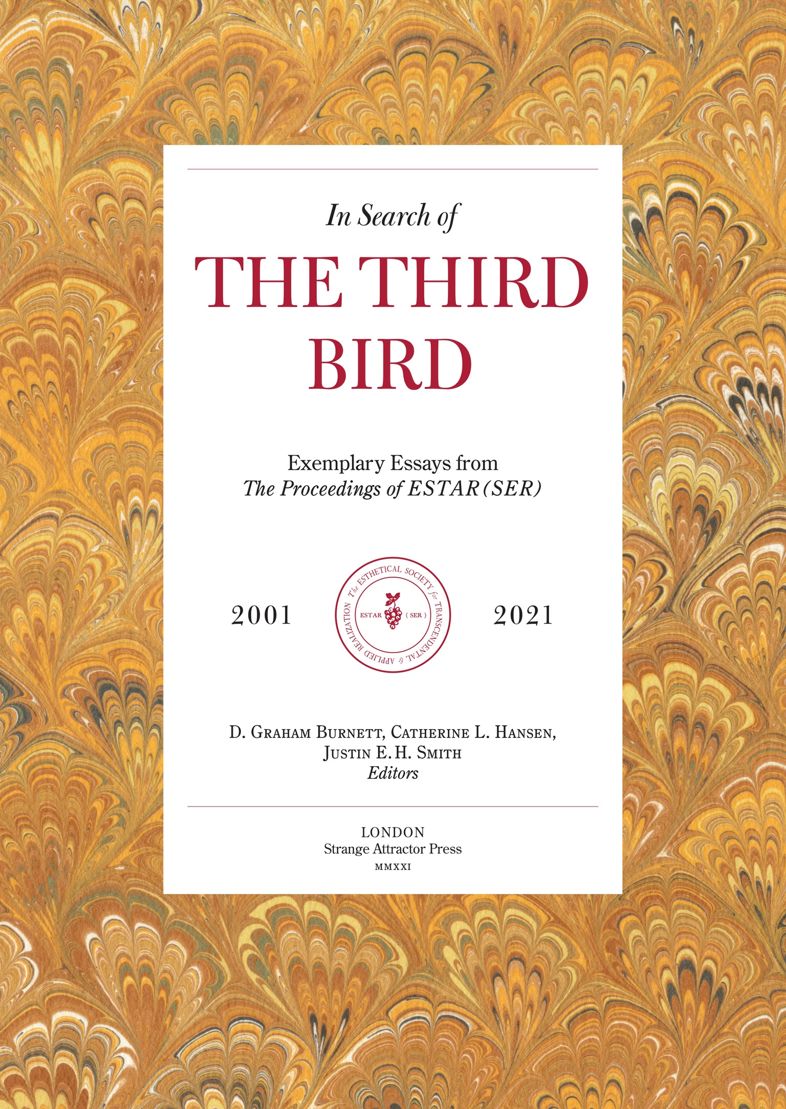In Search of the Third Bird: Exemplary Essays from the Proceedings of ESTAR(SER) London: Strange Attractor Press, 2021
D Graham Burnett, Catherine L Hansen and Justin E H Smith (eds.)
It is said that Zeuxis went back to work on that painting, in the hopes of improving the child, and that when he put this new work outside to dry, he hid himself in the bushes to watch. And we are told that he saw three birds approach. One, making for the grapes, seemed suddenly to notice the boy and flew off with a squawk. The second, similarly drawn to the fruit, disregarded their guardian entirely, and pecked furiously at the illusory meal. But the third stopped before the tablet and stood in the sandy courtyard, looking fixedly at the image, and seemingly lost in thought. "What a curious bird!" mumbled Zeuxis, but the bird did not move to fly.
I ordered a copy of this handsome collection of the proceedings of ESTAR(SER) on the strength of one of its editors—I've been an admirer of Justin E H Smith's blog and books for a few years now—and it more than lived up to my expectations. ESTAR(SER) are a group of scholars, both amateur and professional, dedicated to the study of—and, perhaps, in some cases, overlapping with—the shadowy conclaves of the Order of the Third Bird. The Birds take their name from the above passage in the Latin poet Ausonias' rendering of the well-known tale of the Greek artist whose depictions of grapes were so lifelike that birds pecked at them.
Birds have often been described as "attention-artists", and the essays in this collection are something like a kaleidoscope of the many forms in which the act of attending to works of art have been practiced or thought over the centuries.
After a while, I ceased to be startled by the many coincidences I found with my own interests and obesssions. I was not expecting to find a single volume containing erudite references to the Pfielstorch of Rostock, the psychology of William James, the artworks of Margaret Preston or the underrated fantasies of Avram Davidson. But a work of sufficient scope and complexity will, like Borges' hypothetical map of the same dimensions as its territory, inevitably find multiple points of contact with the receptive reader. Conversely, following up the countless references to matters of which I was ignorant has been enlightening: one feels the world to be a wider and more interesting place, for example, once one has learnt of the existence of the St Loius Hegelians.
Although the Birds themselves seem largely to have practiced their attention-rituals on visual or plastic works of art, this volume itself is an example of a book which demands, and rewards, the attention of the reader.
The only thing which could have added to my enjoyment of it would be to have discovered it for myself, without having known anything about its editors, on a lonely shelf in a vast library, at that hour around dusk when the spaces around and between the volumes seem most pregnant with possibility.
